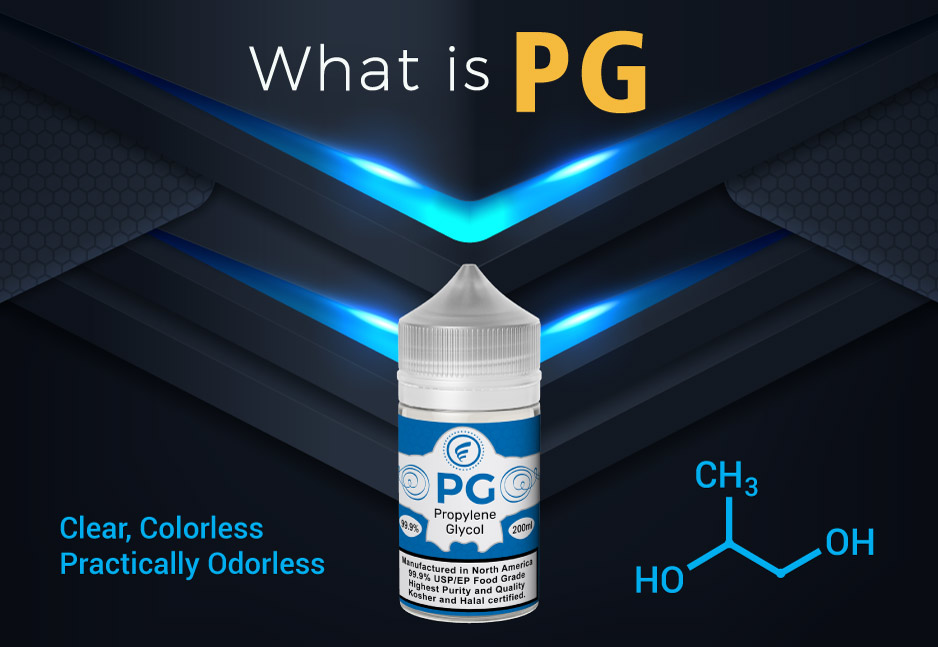
What Is Propylene Glycol (PG)?
You may be aware of the presence of PG in your vape juice, and perhaps you have even done a little research into choosing e-liquid with a higher PG content versus a higher VG content. However, you may not know what exactly PG is. Let’s take a closer look at this common ingredient in e-juice.
PG stands for Propylene Glycol. It is a thin, odourless, natural substance derived from propylene and used in a huge variety of products, from household products to cosmetics to medicines to foods. Some of the specific products you might find PG in – besides vape juice – include lotions, soaps, deodorants, asthma inhalers, non-toxic cleaners, soft drinks, salad dressings, and fat-free ice cream, just to name a few. Because the body metabolizes PG as alcohol, it can cause negative reactions in a few sensitive users, but it is considered safe for consumption for people without these sensitivities.
PG in e-liquid
PG is used in vape juice for its specific functions. First of all, PG is thinner than VG, the other ingredient you’ll find in your bottle of e-liquid. PG has no color or odor. In vaping, it provides a throat hit similar to smoking cigarettes. Some vapers prefer this feeling because they are trying to replace smoking with a better alternative. Other vapers prefer higher-VG liquids because they want a smoother hit and, in some cases, the ability to create large, thick vapor clouds. However, PG can carry flavor more effectively than VG, which is one of the main reasons that it’s the most common suspension fluid for the nicotine and flavor concentrates also found in your e-liquid.
Is PG safe?
The short answer is yes, PG is safe. The FDA and Health Canada has determined PG to be safe as a food additive, and multiple studies have shown that it’s safe to ingest orally. While most of these studies look at the oral ingestion of PG rather than inhalation, there is a long-term study that concluded that PG, even when inhaled, was “completely harmless.”
A more recent study did suggest that PGEs (a mixture of propylene glycol and glycol ethers found in many household products may exacerbate allergy symptoms in children. However, it was determined that the glycol ethers – not the PG – was responsible for this effect. Considering the evidence, it’s reasonable to conclude that PG is safe when inhaled.
One argument we hear often is that “PG must be unsafe because it is also used in antifreeze.” This is a logical fallacy. No one is saying, “don’t eat salt because it is also used in enemas.” Simply because an ingredient happens to be useful in food and non-food items alike does not make it any less safe in food products. Incidentally, while PG is considered safe for humans and dogs, it is not safe for your cat to ingest, so you should keep your e-liquids stored out of your kitty’s reach.
Should you choose a vape juice with a higher PG content or more VG? It depends on several factors. Here is a guide to choosing the right e-liquid for you to achieve the most satisfying vaping experience possible.

